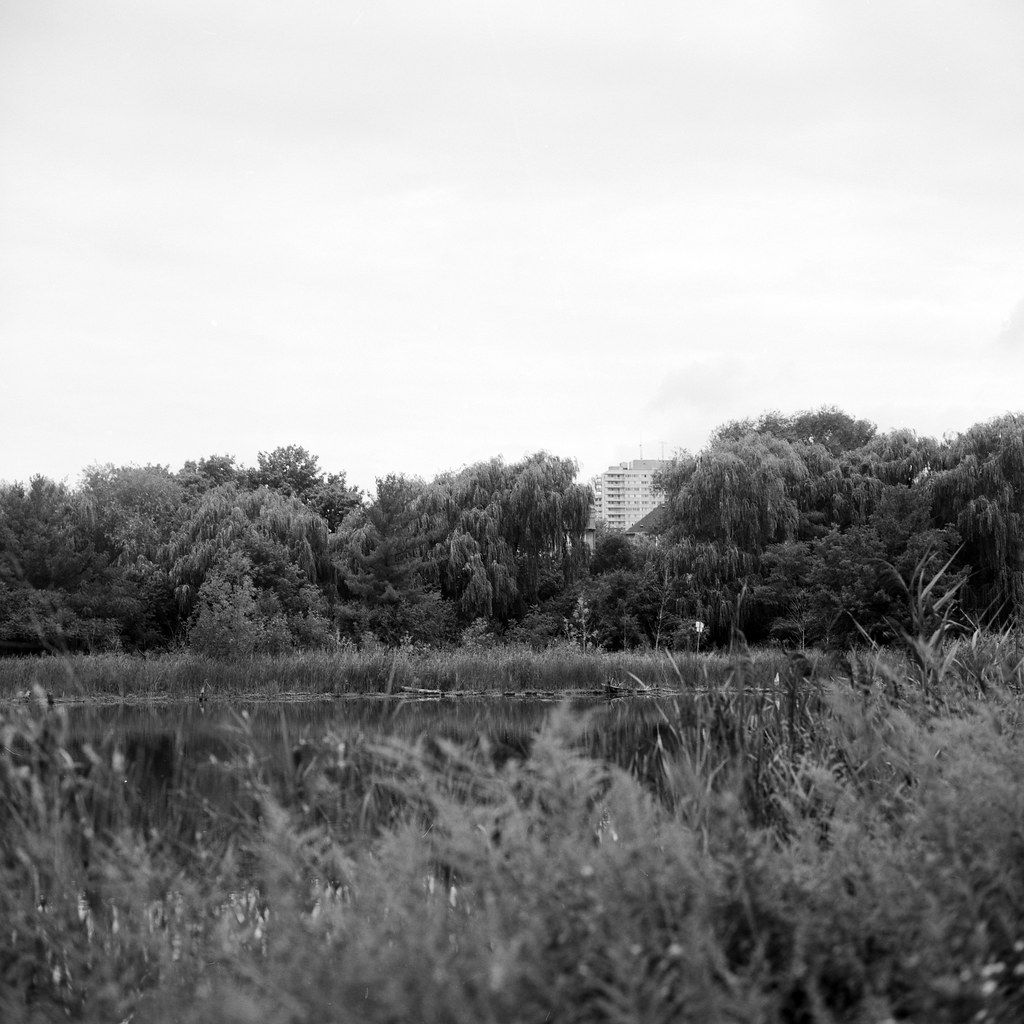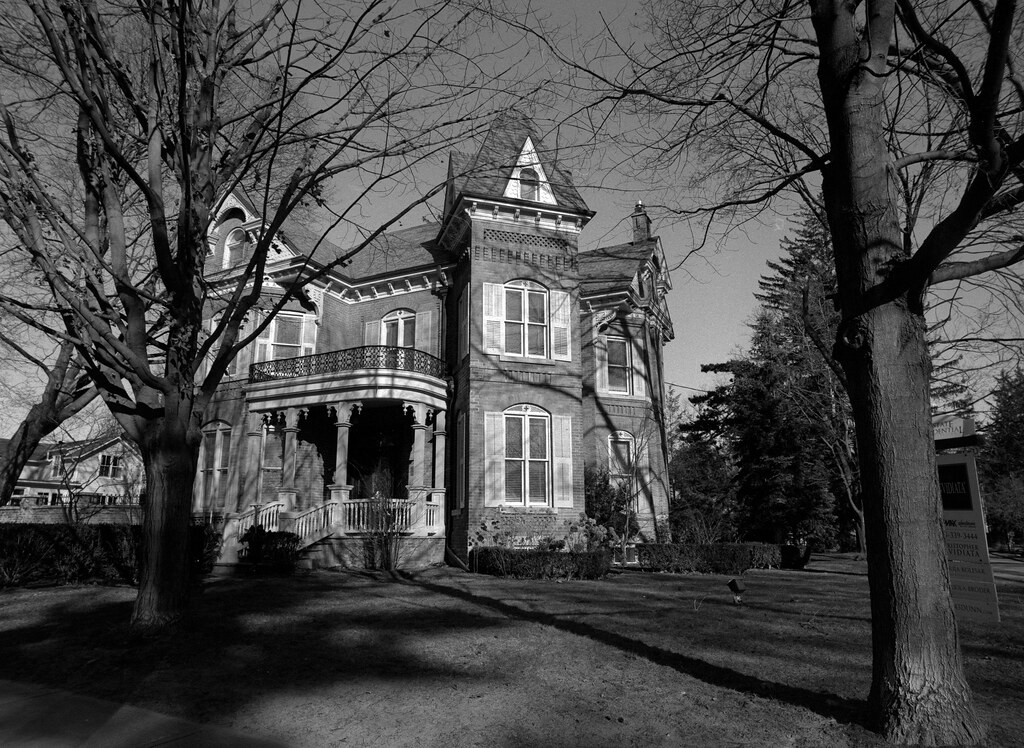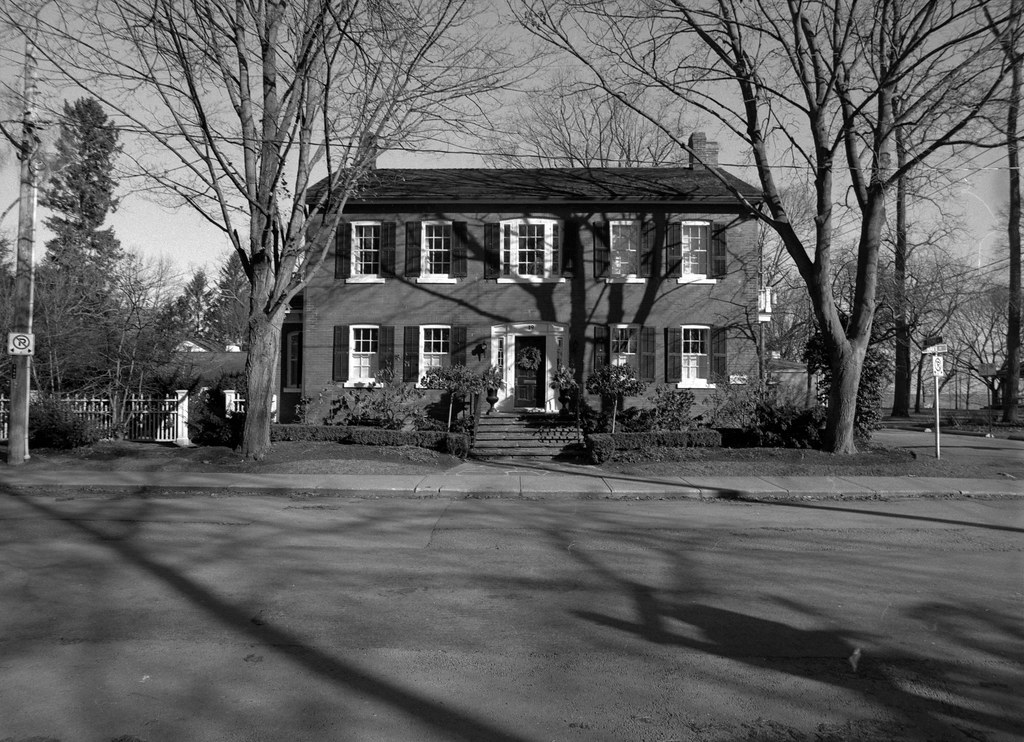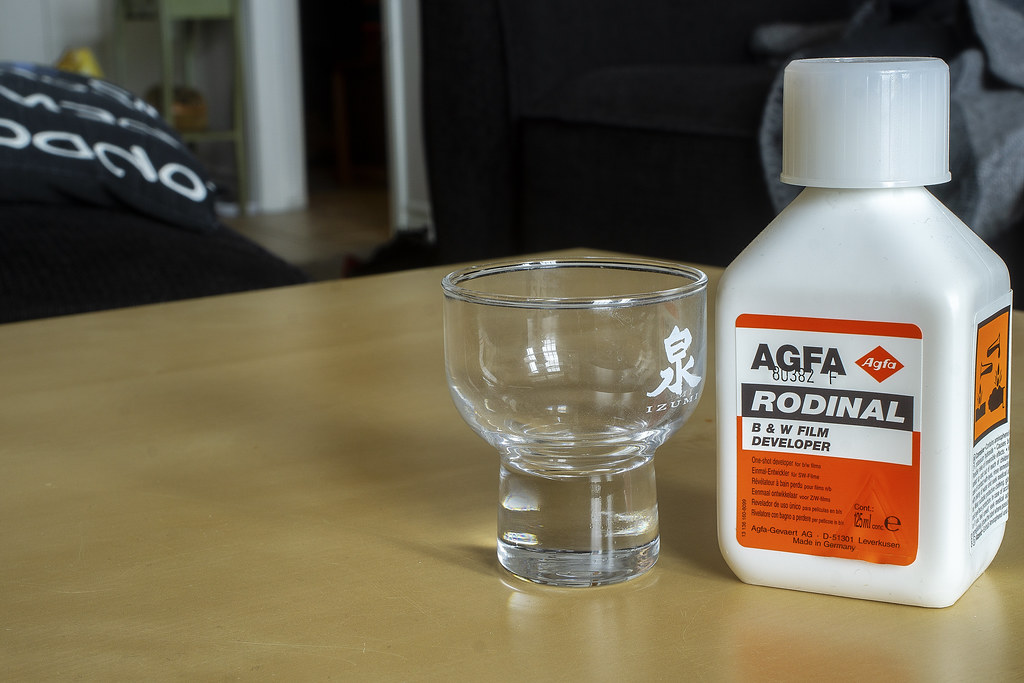There are new developers, there are old developers, and then there is Rodinal. First released in 1891 by Agfa, Rodinal is the brainchild of the Doctor, not that Doctor, but Dr Momme Anderesen who disliked the reliance on hydroquinone in the traditional film developers of the day. Instead, he began work on using Aromatic Amines in 1880 before settling on p-aminophenol. The result is the developer we call today Rodinal. And for much of its life was a closely guarded secret by Agfa, at least until the patent expired. And while today Agfa exists, Rodinal has taken on many different forms, but the same formula. For me, I think that the brand of Rodinal I use today regularly has the best name, Blazinal, it is, the same formula that Dr Andersen created over a century ago. To be fair, I have used a bottle of the original stuff once; I still have the empty bottle on my display shelf to this day. And while a part of me wishes I did keep it sealed to open at some opportune anniversary, I know that I can still get one of the oldest and rather versatile developers out there quickly. And if I have to, and my amazing wife allows, I might be able to mix it up from scratch myself.
Technical Details
Manufacturer: Agfa, Adox, Blazes, Foma
Name: Rodinal, aka. Adonal, Blazinal, Fomadon, R09 One-Shot
Primary Developer: 4-aminophenol
Type: One-Shot
Mix From: Liquid




Handling
Before I start, I’m going say this, Rodinal is bulletproof, even if you use it sparingly and store it right it will last. I don’t often go to Petapixel, but this article proves the point, a photographer cracked a bottle of 100-year-old Rodinal and successfully used the stuff to develop a roll of film. As developers go, Rodinal is both easy to handle and stable in liquid concentrate. A sealed bottle will last a long time, but it does not last indefinitely. While an open bottle will last for years, it, like other developers, will suffer from oxidation. Mixing the developer is easy as the liquid is easily poured, and you don’t need too much of it to make a highly effective developer. In general, Rodinal is used in dilutions of 1+25 and 1+50, making it economical. I’ve only gone through a couple of bottles since starting to work with the stuff in my eight years of home development. But there are also special uses, such as stand and semi-stand developing. The rule of thumb being a 1+100 dilution you let go for an hour, or 1+200 for two hours. Of course, you do need to include some light inversion to prevent bromide drag. If you do come across a bottle of Agfa branded Rodinal, as long as it’s sealed you’ll be good to use it. If one is opened, and you see a lot of crystallisation flush the stuff (using proper chemical disposal techniques). Now I also have to note that due to the highly concentrated nature of the developer, it is highly toxic, not the most toxic developer that I use regularly, it’s still rather nasty.




Applications
Rodinal being a developer that is known for both contrast and sharpness. My favourite films to use with the developer is slower speed films, mostly under ASA-100. That said, there are certain advantages to using it with faster films once you get past the fear of increased grain. Rodinal is the developer you choose when you want to increase the inherent sharpness in a film stock. While you do get increased contrast when working with the developer in the 1+25 dilution, you can tame it a little when you increase the dilution to 1+50. Of course, if you’re still not into the whole increased contrast, then you can show off one of the unique features of Rodinal, stand development. By diluting it down to 1+100 and letting it sit for an hour (with a full inversion at the thirty-minute mark), it can help tame any contrast and any increased grain that might come with using the developer. Plus using the method as almost a universal formula you can develop multiple film types at once and figure out a mystery film. But let’s talk films here, some of my favourite stocks that work great with Rodinal include Ilford Pan F+, Rollei RPX 25, and Ilford FP4+ on the slower side of things. But you can get magical results from Kodak Tri-X with a one-stop pull and while the grain is manageable in medium and large formats, but is noticeable in 35mm. Surprisingly Bergger Pancro 400 pushed to 800 looks amazing in Rodinal and JCH Streetpan 400 works great in the stuff also.




Qualities
Rodinal is one of the sharpest developers out there, but it does so at a cost. While the developer will enhance sharp films, it will also increase grain to achieve that sharpness. And while slower films you won’t see it as much, but in faster films or films that are grainy by their nature, you’ll see it a lot more. Also, the size of your film will affect the level of grain; you’ll see it more in smaller formats, less in larger as I saw with Kodak Tri-X. It also will do this through increasing contrast, so you will see a bump in contrast, especially when working with the standard dilutions. Such an effect is minimised when you use a stand-developing technique.




Lowdown
A bottle of Rodinal is a developer that I think should be in most home developer’s toolkit. It can help you out in a pinch and help get the best and sharpest results out of most films. Plus being able to stand-develop will save you more than once as it has for me. And while you can only find the original stuff in new-old-stock these days. It is available in many different forms from many different companies. Plus the price point is pretty fair, I pay about 24$ for a 500mL bottle from my local store at it lasts me at least a couple of years of regular use, and I mostly use standard dilutions. If you’ve never used it, I hope that this review has encouraged you to pick up a bottle, or if you’re a long-time user, I hope that I’ve you to try it out with faster films without fear.




Recommended Reading
Don’t just take my word on Rodinal check out these other blogs on the subject!
Classic Camera Revival – Episode 58 – Don’t Drink the Rodinal Pt. II
Macfilos – Film Processing at the Dead of Night with a Bottle of Rodinal
Martin Zimelka – Agfa Rodinal
